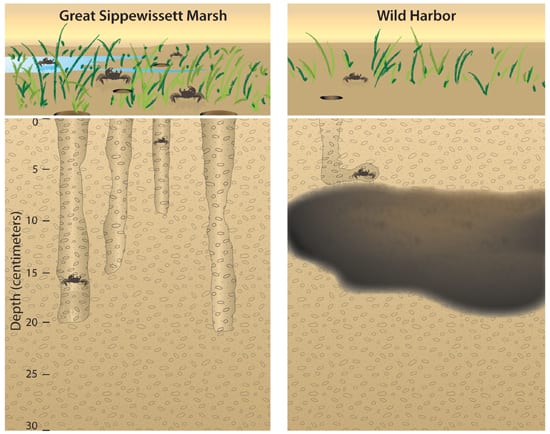Through a series of field observations and laboratory experiments, graduate student Jennifer Culbertson, marine chemist Chris Reddy, and colleagues found that the burrowing behavior and other biological traits of salt marsh fiddler crabs were significantly altered when the crabs were exposed to leftover oil compounds from a 1969 spill. Crabs that burrowed into the relatively pristine marsh in some areas made holes that were straight and stretched an average of 14.8 centimeters. In contaminated marshes, the burrows averaged 6.8 cm and showed erratic shapes. The locations of the stunted, twisted burrows mapped closely with the location of residual oil in the sediments. (Illustration by E. Paul Oberlander, WHOI Graphic Services)
Image and Visual Licensing
WHOI copyright digital assets (stills and video) on this website can be licensed for non-commercial use upon request and approval. Please submit your request via our Media Request Form.
For assistance or accessibility accommodations, call (508) 289-2647.
